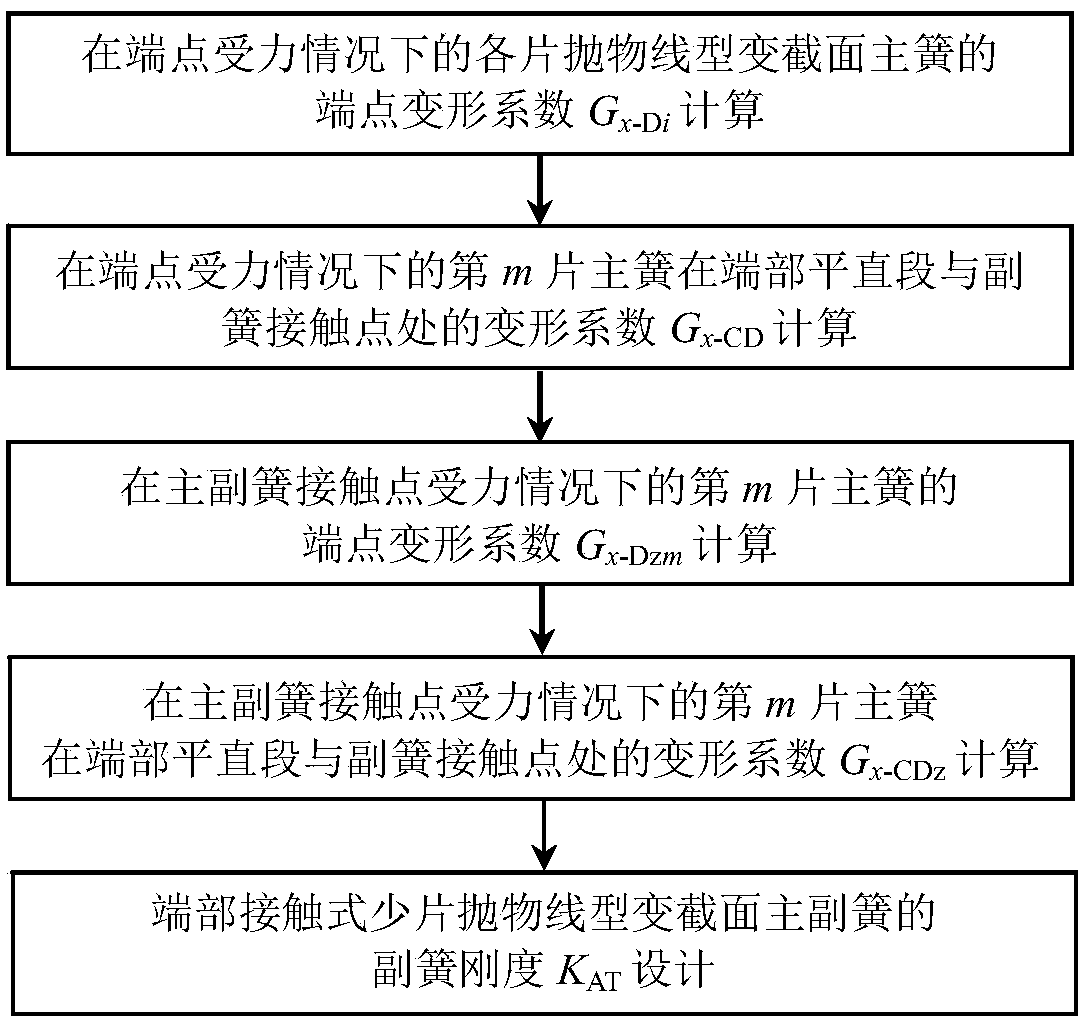Design Method of Auxiliary Spring Stiffness of End-contact Few Parabolic Primary and Auxiliary Springs
A kind of stiffness design, parabolic technology, applied in the direction of calculation, instrument, geometric CAD, etc., can solve the design method, can not obtain accurate and reliable auxiliary spring stiffness design value, the main and auxiliary spring internal force analysis and calculation is complex and other problems
- Summary
- Abstract
- Description
- Claims
- Application Information
AI Technical Summary
Problems solved by technology
Method used
Image
Examples
Embodiment 1
[0027] Embodiment 1: The width of the primary and secondary springs of a few-piece parabolic variable-section contact type at the end is b=60mm, the modulus of elasticity E=200GPa, half of the installation distance l 3 =55mm; Among them, the number of main reeds m=2, half the length L of each main spring M =575mm, root thickness h 2M =11mm, the distance l from the root of the parabola segment to the end point of the main spring 2M =L M -l 3 =520mm; Thickness h of the straight section at the end of the first main spring 11 =7mm, the thickness ratio of the parabolic segment of the first main spring to β 1 = h 11 / h 2M =0.64; the thickness h of the straight section at the end of the second main spring 12 = 6mm, the thickness ratio of the parabolic segment of the second main spring to β 2 = h 12 / h 2M = 0.55. Secondary spring half length L A =525mm, the horizontal distance l between the auxiliary spring contact and the main spring end point 0 =L M -L A =50mm, when t...
Embodiment 2
[0045] Embodiment 2: The width b=60mm of the primary and secondary springs of a few-piece parabolic variable-section contact type at the end, the modulus of elasticity E=200GPa, half of the installation distance l 3 =60mm; Among them, the number of main reeds m=2, half the length L of each main spring M =600mm, the thickness h of the straight section at the root 2M =12mm, the distance l from the root of the parabola segment to the end point of the main spring 2M =L M -l 3 =540mm,; Thickness h of the straight section at the end of the first main spring 11 = 8mm, the thickness ratio of the parabolic segment of the first main spring to β 1 = h 11 / h 2M =0.67; the thickness h of the straight section at the end of the second main spring 12 =7mm, the thickness ratio of the parabolic segment of the second main spring is β 2 = h 12 / h 2M = 0.58. Half length L of secondary spring A =540mm, the horizontal distance l between the auxiliary spring contact and the main spring en...
PUM
 Login to View More
Login to View More Abstract
Description
Claims
Application Information
 Login to View More
Login to View More - R&D
- Intellectual Property
- Life Sciences
- Materials
- Tech Scout
- Unparalleled Data Quality
- Higher Quality Content
- 60% Fewer Hallucinations
Browse by: Latest US Patents, China's latest patents, Technical Efficacy Thesaurus, Application Domain, Technology Topic, Popular Technical Reports.
© 2025 PatSnap. All rights reserved.Legal|Privacy policy|Modern Slavery Act Transparency Statement|Sitemap|About US| Contact US: help@patsnap.com



